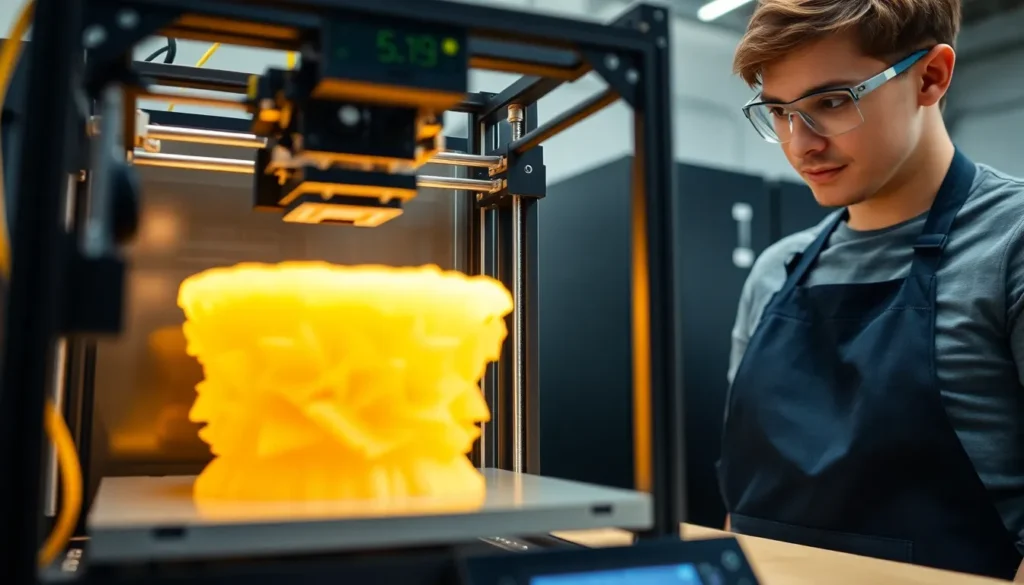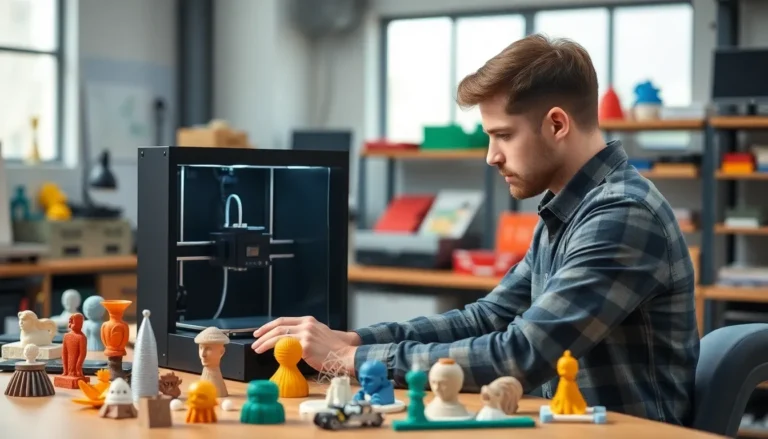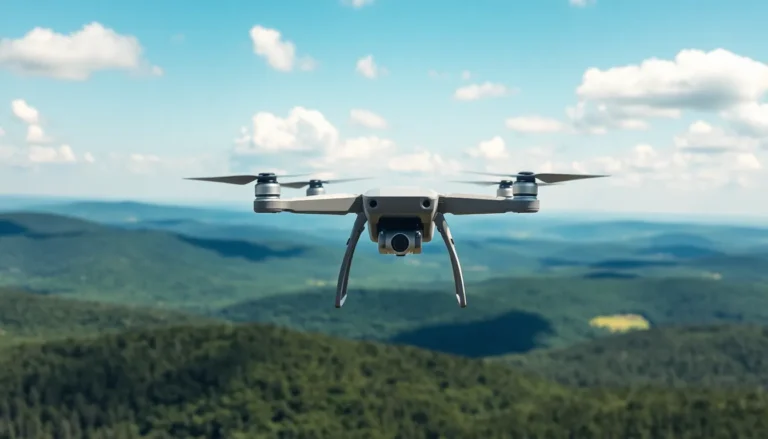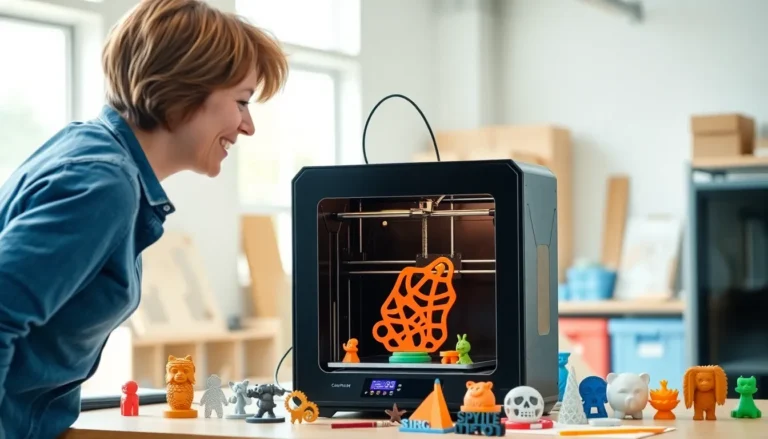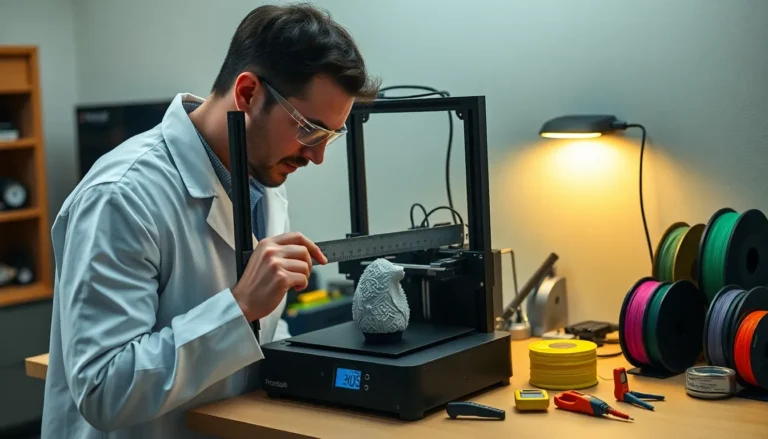In the world of 3D printing, layer height is the unsung hero of design. It’s the secret sauce that can turn a mediocre print into a masterpiece—or a total disaster. Think of it as the Goldilocks principle: too thick, and your print looks like a brick; too thin, and you’re left with a fragile work of art that could crumble at the slightest touch.
Table of Contents
ToggleOverview of Layer Height 3D Printing
Layer height in 3D printing plays a vital role in determining the final print’s appearance and structural integrity. A smaller layer height often results in smoother surfaces and finer details, appealing to those seeking high-resolution prints. Conversely, larger layer heights can expedite the printing process and produce robust models but may sacrifice detail.
Opting for a 0.1 mm layer height typically yields higher quality, while a 0.4 mm layer height provides efficiency. Adjustments in layer height influence print time and material usage. Each printing project requires careful consideration of the desired balance between speed and quality.
When dealing with intricate designs, selecting a smaller layer height proves beneficial as it captures delicate features better. Conversely, for larger objects or prototypes, using a greater layer height reduces overall print time without compromising mechanical strength. Troubleshooting print issues, such as warping or clogging, often links back to layer height choices.
Understanding the implications of layer height leads to informed decisions regarding settings for different materials. PLA, for instance, often performs well at a layer height of 0.2 mm, providing a solid balance of quality and time efficiency. In contrast, flexible filaments may require different height adjustments to achieve optimal adhesion.
Experimentation with various layer heights helps printers discover the ideal settings for specific applications. Printing at different layer heights fosters an understanding of their particular advantages and drawbacks. Balancing layer height with other parameters like print speed and temperature creates a harmonious printing experience, enhancing overall results.
Importance of Layer Height in 3D Printing
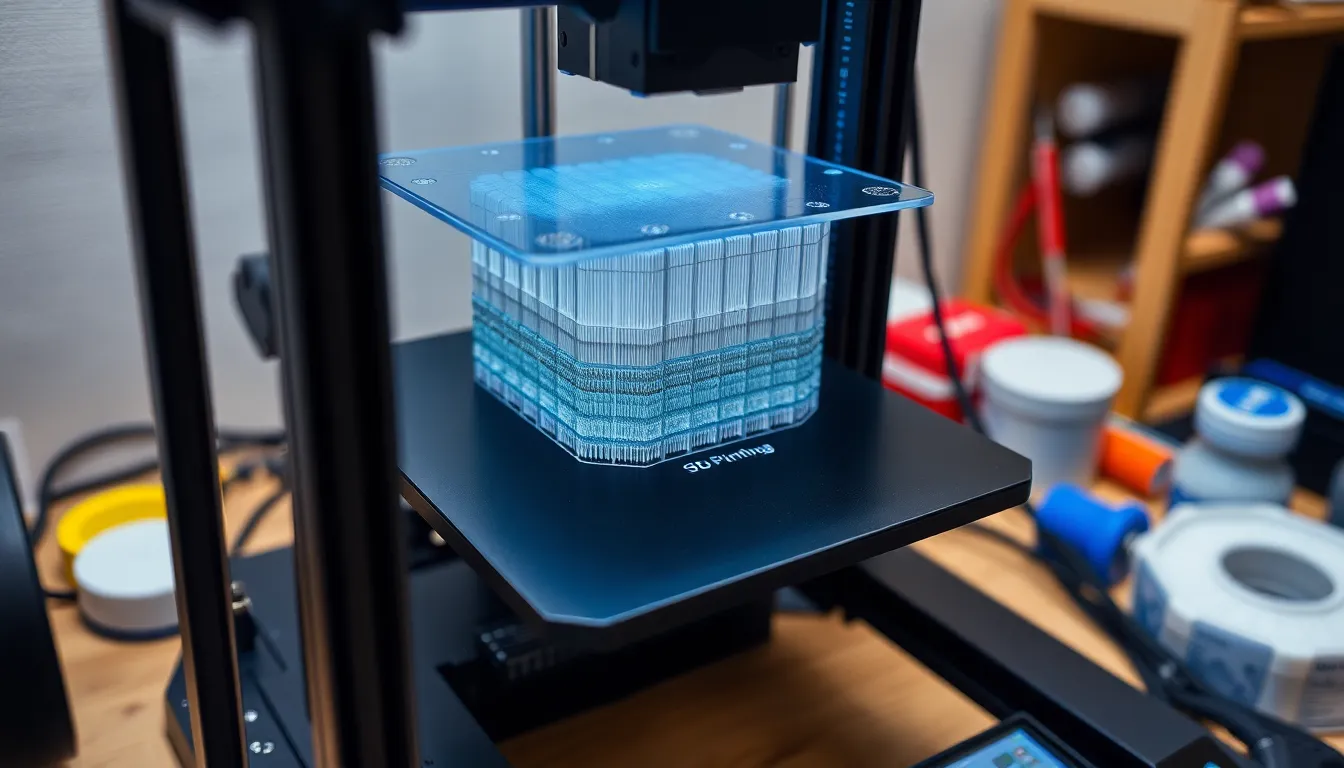
Layer height significantly affects 3D printing outcomes, making it a vital consideration for print quality and efficiency.
Affects Print Quality
Layer height directly impacts the final appearance of prints. Smaller layer heights, such as 0.1 mm, yield smoother surfaces and finer detail, enhancing high-resolution models. In contrast, larger layer heights, like 0.4 mm, may create visible lines and texture but can better suit functional prototypes. Each layer contributes to the overall structure, influencing durability and aesthetic appeal. When designing intricate features, a smaller layer height captures delicate aspects more effectively. Varieties of materials react differently; for instance, PLA excels at 0.2 mm, offering a compromise between clarity and sturdiness. Print quality variation underscores the importance of selecting an appropriate layer height for specific projects.
Influences Print Speed
Print speed often varies with layer height settings. Choosing a larger layer height reduces print time significantly, allowing quick production of larger objects. This faster approach benefits prototyping and less detailed parts. Conversely, selecting a smaller layer height can increase processing time while improving detail and finish. Balancing these aspects is critical for achieving desired results without wasting time or materials. Print speed also affects the overall flow of the printing process. A well-optimized layer height not only enhances quality but can streamline the entire production timeline. Each project benefits from careful consideration of print speed relative to layer height for optimal performance.
Choosing the Right Layer Height
Selecting the correct layer height is essential for achieving the desired outcome in 3D printing. This decision directly impacts print quality, speed, and material use.
Standard Layer Heights
Commonly used standard layer heights include 0.1 mm, 0.2 mm, and 0.4 mm. A 0.1 mm height typically produces finer details, making it ideal for high-resolution prints. Choosing a 0.2 mm height often represents a balanced option, providing good quality while maintaining a reasonable print time. For quicker projects, a layer height of 0.4 mm allows for faster production of larger models, though it comes with a sacrifice in detail. These standard heights cater to different project needs, so understanding the benefits of each option aids in making informed choices.
Factors to Consider
Numerous factors influence the selection of layer height. Print resolution and detail requirement play crucial roles in decision-making. Smaller layer heights yield better surface finishes but increase print duration. Material type can also dictate suitable layer heights; for instance, PLA performs well at 0.2 mm. Printer capabilities might limit achievable layer heights, so awareness of equipment specifications is vital. Lastly, project urgency can drive the choice of a thicker layer height when time constraints are present. Evaluating these factors fosters optimal results.
Impact on Different Materials
Layer height significantly affects the printing characteristics and outcomes based on the material used. Understanding these nuances aids in optimizing each 3D printing project.
PLA
PLA performs well with a layer height of approximately 0.2 mm. This setting balances quality and efficiency, enabling detailed prints without extending processing times excessively. Smaller layer heights enhance detail retention, making it ideal for intricate designs. Users often achieve smoother finishes and sharper features by opting for lower heights. A common choice for beginners, this material also minimizes warping, which fosters reliable results. Adjustments in layer height can lead to a direct influence on printing speed while maintaining structural integrity. Focusing on the specific capabilities of a printer can further refine results with PLA.
ABS
ABS typically benefits from a layer height around 0.2 mm to 0.3 mm for best outcomes. This range provides a sturdy foundation for functional prototypes, striking a balance between detail quality and print strength. Larger layer heights expedite prints, making it advantageous for rapid production cycles. Notably, optimizing layer height helps mitigate common issues like warping and cracks. Printers who choose a thinner layer height may experience increased detail in complex designs, though print times will extend. Ensuring adequate ventilation and print settings plays a crucial role in successfully using ABS, especially when it comes to achieving optimal results.
Common Challenges and Solutions
Layer height adjustment presents several challenges in 3D printing. These challenges include issues with layer adhesion and the need for optimized print settings to achieve the best results.
Issues with Layer Adhesion
Layer adhesion problems arise when layers do not bond sufficiently during printing. Insufficient bonding leads to weak prints and can result in structural failures. Lower layer heights often enhance adhesion due to increased surface area contact. However, a balance must exist; excessively low heights could trap heat, causing warping. Material choice influences adhesion as well. For example, PLA tends to adhere well, while ABS may require adjustments like temperature increases for optimal bonding. Evaluating environmental factors like cooling fans can also contribute to improved adhesion during layer printing.
Optimizing Print Settings
Optimizing print settings remains crucial for achieving quality prints. Adjusting layer height directly affects print speed and quality. Faster print speeds with larger layer heights reduce detail. Conversely, slower speeds yield better quality with finer details but increase total print time. Changing temperature settings based on material type can enhance flow and adhesion. PLA often prints best at temperatures around 200°C, while ABS might require a range of 220°C to 240°C. Fine-tuning retraction settings can also minimize stringing and improve overall appearance. Each printer has settings unique to its capabilities; experimenting leads to understanding the optimal combination for specific projects.
Selecting the right layer height is essential for achieving optimal results in 3D printing. It directly influences print quality speed and material efficiency. By understanding the nuances of layer height adjustments and their impact on different materials printers can make informed decisions tailored to specific projects.
Whether aiming for high-resolution details or quicker production times the balance between layer height and other printing parameters is crucial. Experimentation with various heights allows for discovering the best settings for unique applications. Ultimately mastering layer height choices leads to successful and satisfying 3D printing outcomes.

